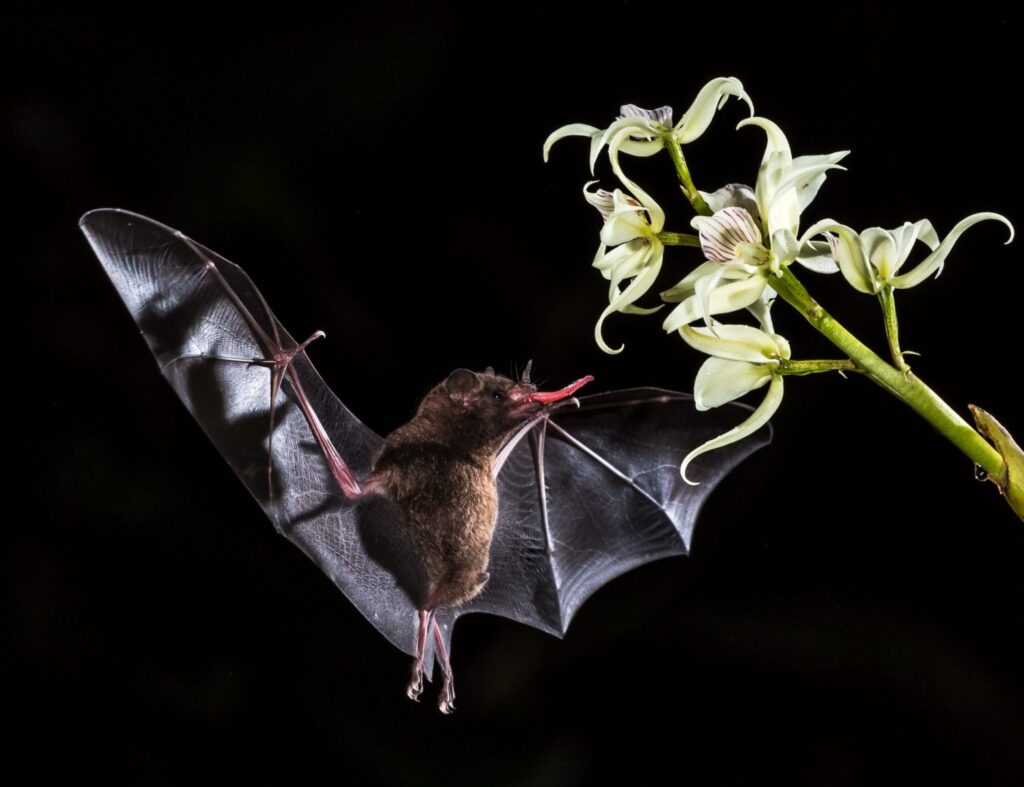This is the second part of a 2-part series of posts exploring the idea of nighttime as a habitat, originally published in 2023 by Noctia Institute. You can read Part 1 here.
Living creatures need both space and time in the conditions they have adapted to in order to survive. In Part 1, I mentioned that the same physical area looks very different at night due to the difference in light levels and occupation by different nocturnal creatures. In this post I want to expand on this, introducing the idea of night as a habitat situated in time as well as in space (a temporal habitat).

The biological processes of all living beings can be split into two broad categories: activity and rest. Activity encompasses the things creatures do to survive through gathering energy and reproducing. Rest is the other portion—a period of metabolic slowdown dedicated to restoration and repair. The most explicit form of rest is sleep, which many animals do, but even creatures that don’t appear to sleep, like spiders, insects, and bullfrogs, enter states of reduced metabolic activity. Microorganisms also show patterns of activity and rest.
Most patterns of rest in living creatures have circadian rhythms, regulated by internal biological ‘circadian clocks’ that are calibrated by cycles of light and dark. Diurnal animals rest when it’s dark and stay awake during the day. Nocturnal animals do the opposite, resting when it’s bright and resuming activity in the dark. Crepuscular animals live on the boundaries of these light changes, being most active at dusk and dawn when light is low, and resting outside these times.
In this way, daylight, night, and twilight are not just physical environments but windows of time that define when different species can be active. The same space is occupied by different creatures depending not only on whether it is illuminated or dark but also on when it is illuminated or dark. Artificial light radically alters these natural time windows, forcing nocturnal and crepuscular species into progressively smaller periods of activity. The broad-spectrum LED fixtures abundant on roads and buildings are particularly disruptive, because they mimic the intensity and composition of daylight, often shining from above, making it impossible for many nocturnal creatures to navigate or forage safely.
Every place naturally experiences an equal balance of daytime and nighttime. The specific amounts of light and dark can vary from day to day — for instance, in parts of the world that experience seasons, some nights are short and others are long. At extreme latitudes, polar regions experience months of continuous darkness or light, yet over a full year, time spent in night and day still balance out. However, human lighting artificially extends daytime conditions into hours that would otherwise be dark, eroding the temporal habitat of nocturnal and crepuscular species.
Many areas use sensor-based lights that turn on automatically right around sunset and remain on throughout the night until light levels rise, usually around dawn. In Part 1, I proposed that the same physical area serves as different habitats depending on whether there is light shining on it or not.
I want to extend this idea to include time—when an area is illuminated for hours that would naturally be dark, the habitat available to nocturnal and crepuscular species is degraded. If their entire active window is overridden by artificial light, they are left with no functional time in which to feed, breed, or navigate safely. This creates an erosion of their temporal habitat by light.
Natural night is necessary for diurnal creatures too. Darkness signals their bodies to enter essential phases of rest and recovery. Light that mimics daylight, whether from screens or outdoor fixtures, disrupts these biological signals, degrading sleep quality in the short term and causing serious health effects over time.
By keeping areas as naturally dark as possible, we prevent a silent and insidious form of habitat loss—one that occurs through the steady erasure of darkness itself. Restoring natural night conditions by minimising artificial light gives dark spaces back to nocturnal creatures, and restores their place in time as well.